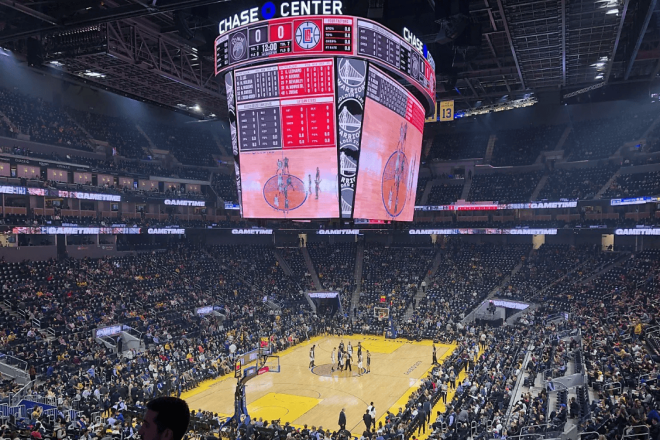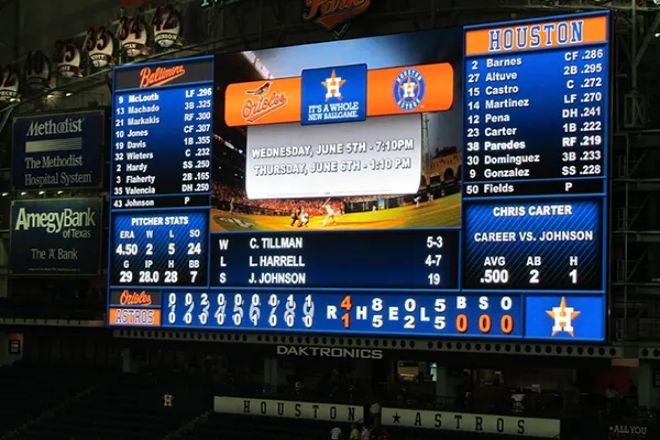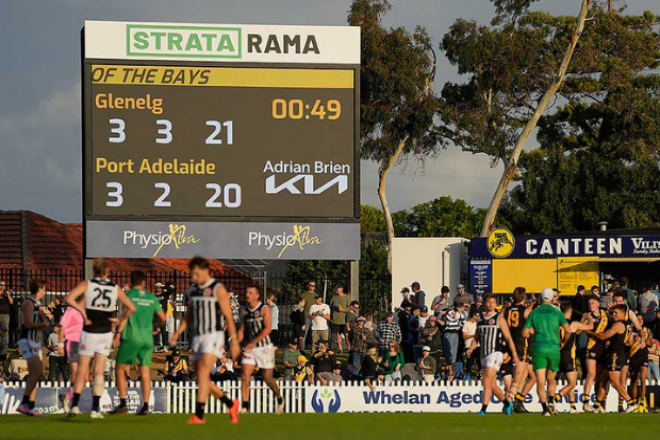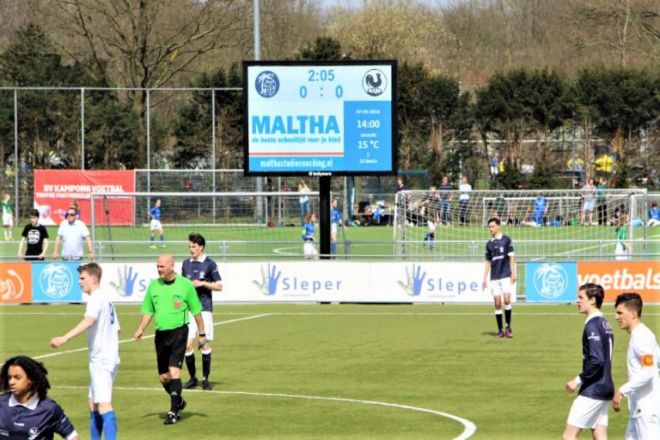Introduction
 LED displays and sports competition scoring systems are playing an increasingly important role in sports events. They provide viewers with real-time and accurate game information to ensure fairness in the game.
LED displays and sports competition scoring systems are playing an increasingly important role in sports events. They provide viewers with real-time and accurate game information to ensure fairness in the game.
So, how does the LED display use the sports competition points system? Let’s continue this article, and you will know the answer.
1.Detailed operation method of LED display using sports competition points system
1). System preparation and connection
Hardware installation and configuration: First, ensure that the LED display screen has been correctly installed at the competition venue. Then, the sports competition points system is ready. Make sure all hardware devices are properly connected and ready to receive and display data.
Software setup and installation: Install the corresponding software according to the points system used. Make sure the software version is compatible with the hardware device. Set the game parameters in the software, such as game name, team, time, etc.
Data transmission connection: Connect the output port of the integration system to the control port of the LED display. Typically, this involves using data cables such as HDMI, VGA, or DVI. Ensure the compatibility and stability of the data cable.
Test display: Before formal use, conduct a simple test display. Ensure that the LED display can correctly receive and display data from the points system.
2). Real-time data transmission and display
Real-time data update: During the game, the points system will collect and calculate game data (such as scores, number of fouls, etc.) in real-time. These data need to be transmitted to the LED display in real-time through the software interface or API interface.
Dynamic content adjustment: Depending on the actual situation of the game, the display content may need to be dynamically adjusted. For example, when a team scores, the display not only displays the score but may also display a brief celebration animation or the scoring team’s team logo.
Multi-screen synchronization: If there are multiple LED displays in the venue, ensure that they can display the same or different data simultaneously to provide a consistent audience experience.
Emergency handling: Set up an emergency handling mechanism. For example, when the network is interrupted, or hardware fails, ensure that the LED display can display preset emergency information or backup content.
3). Post-match data organization and backup
Data sorting: After the game, all game data will be sorted and archived for subsequent analysis and use.
Data backup: Back up all game data regularly to prevent data loss. You can use an external hard drive, cloud storage, or other backup solution.
Error troubleshooting and repair: After the game, check the LED display and points system for any errors or abnormalities and make necessary repairs.
2. How LED display screen uses sports competition points system asynchronously

Identify requirements: First, clarify why asynchronous control is needed.
For example, we are ensuring the real-time nature of information at critical moments of the game or ensuring the integrity of information when the network is poor.
Parameter settings: Enter system settings, select asynchronous mode, and adjust relevant parameters according to actual needs, such as data update frequency, priority, etc.
Establish communication: Ensure stable data transmission between the LED display and the points system. This may involve the selection and configuration of multiple communication protocols.
Dynamic content adjustment: Asynchronous controls provide greater flexibility for content adjustment. For example, according to the progress of the game, dynamically display scores, time, player information, etc.
Data accuracy: In asynchronous control, special attention should be paid to the accuracy and completeness of data. Implement strategies such as data verification and backup to ensure that information is accurate.
Testing and optimization: It is very necessary to conduct sufficient testing before the actual application. This helps identify and resolve potential issues, ensuring the stability and effectiveness of asynchronous control in actual matches.
Synchronous and asynchronous switching: According to actual needs, you can quickly switch to synchronous mode when necessary to ensure the real-time and accuracy of information.
3. Comparison of the application of single-color, double-color, and full-color LED displays in sports competition points systems.
1). Monochrome LED display
Display content: Mainly suitable for displaying text information, simple graphics, and icons.
Application scenario: In sports competitions, it is usually used to display basic information such as team name, game time, and timer.
Advantages: simple structure, low cost, and long life.
Limitations: The color is single, unable to display rich images and dynamic effects, and the visual effects are relatively monotonous.
2). Two-color LED display

Display content: In addition to basic black and white text, it can also display two colors to enhance visual effects.
Application scenario: In sports games, it can be used to display key information such as scores and the number of fouls and distinguish the data of the two teams through different colors.
Advantages: More visually appealing than monochrome displays and able to provide richer information display.
Limitations: It still has a limited color range, which may be slightly insufficient for scenes that need to display multiple colors or images.
3). Full-color LED display

Display content: Supports three primary color displays of red, green, and blue and can generate images and videos of various colors.
Application scenario: In sports competitions, the full-color display screen can play game videos in real time and replay exciting moments, providing the audience with an immersive viewing experience.
Advantages: bright colors, excellent dynamic effects, and strong visual impact.
Limitations: The cost is higher, more hardware and control technology are required, and maintenance costs are relatively high.
4. What should I do if the sports competition points system displays delays or content errors on the LED display?
If the sports competition points system displays delays or content errors on the LED display, it may be due to many reasons.
First, you need to check whether the system settings are correct, such as the time and frequency of data transmission, etc.
Secondly, check whether the hardware devices, such as control cards, power supplies, etc., are working properly.
If none of the above is a problem, then the problem may be with your network connection, as some systems may need to transfer data over the network. In this case, you need to check whether the network connection is normal.
Conclusion
We have an in-depth understanding of the importance of LED displays and sports scoring systems in practical applications.
Provide strong support for the modern development of sports events and improve the enjoyment and fairness of events. This article may be helpful to you.
If you have any questions about LED displays, please contact us!
